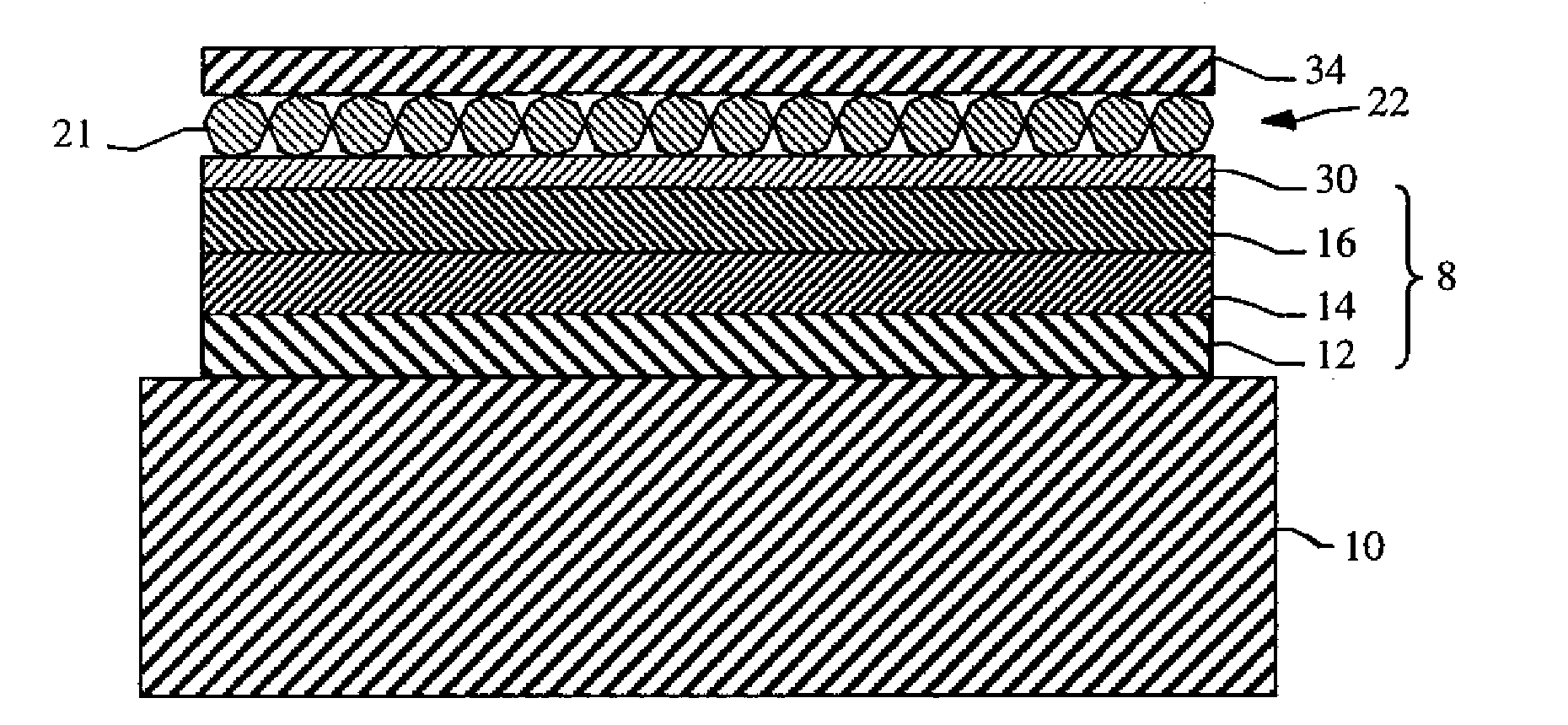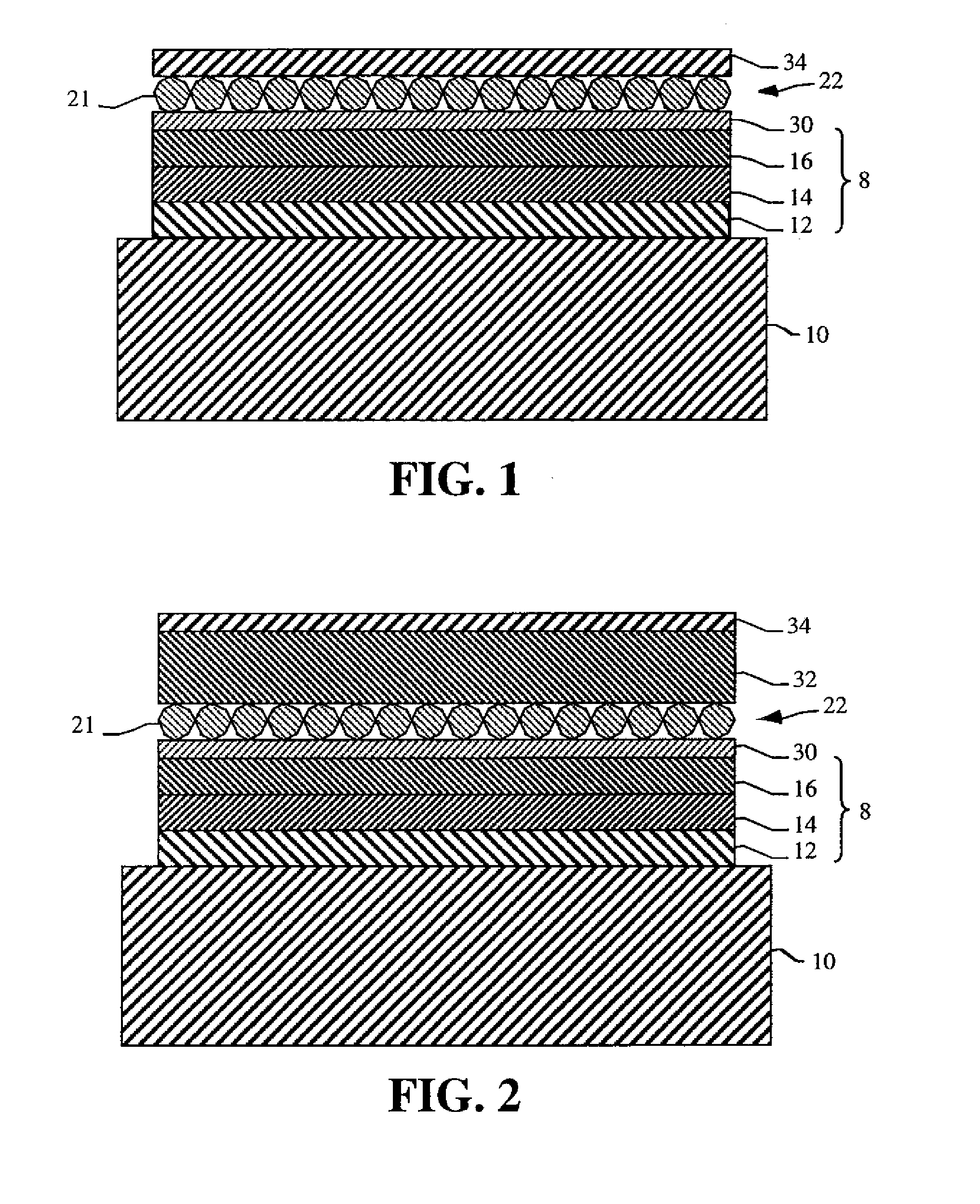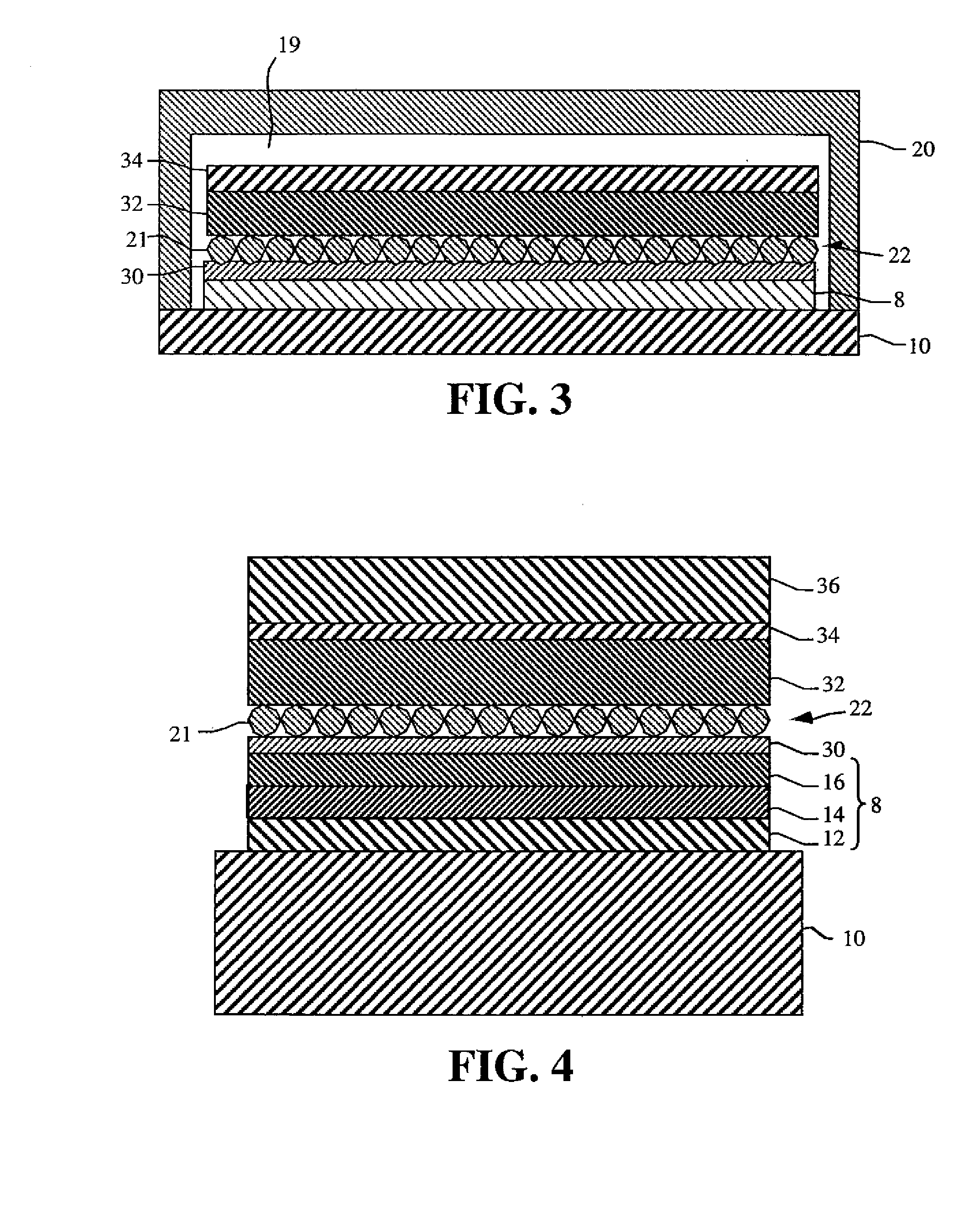Light-emitting device having improved light output
a technology of light-emitting diodes and led devices, which is applied in the direction of organic semiconductor devices, solid-state devices, thermoelectric devices, etc., can solve the problems of difficult patterned deposition, inefficient designs, and high cost of metal masks, so as to improve the sharpness, improve the effect of light output and environmental protection
- Summary
- Abstract
- Description
- Claims
- Application Information
AI Technical Summary
Benefits of technology
Problems solved by technology
Method used
Image
Examples
Embodiment Construction
[0035]Referring to FIG. 1, in accordance with one embodiment of the present invention, a light-emitting LED 6 device comprises one or more light-emitting LED elements 8 including first and second spaced-apart electrodes 12, 16 with one or more light-emitting layers 14 formed there-between, wherein at least one of the electrodes is a transparent electrode. A first transparent encapsulating layer 30 has a first optical index formed over transparent electrode 16 opposite the light-emitting layer 14, a light-scattering layer 22 formed over the first transparent encapsulating layer 30 opposite the transparent electrode 16, and a second transparent encapsulating layer 34, having a second optical index lower than the first optical index and formed over the light-scattering layer 22. The light-scattering layer 22 may comprise light-scattering particles 21. As shown in FIG. 1, the light-emitting LED element 8 emits light from the light-emitting layer 14 through the transparent electrode 16 o...
PUM
 Login to View More
Login to View More Abstract
Description
Claims
Application Information
 Login to View More
Login to View More - R&D
- Intellectual Property
- Life Sciences
- Materials
- Tech Scout
- Unparalleled Data Quality
- Higher Quality Content
- 60% Fewer Hallucinations
Browse by: Latest US Patents, China's latest patents, Technical Efficacy Thesaurus, Application Domain, Technology Topic, Popular Technical Reports.
© 2025 PatSnap. All rights reserved.Legal|Privacy policy|Modern Slavery Act Transparency Statement|Sitemap|About US| Contact US: help@patsnap.com



